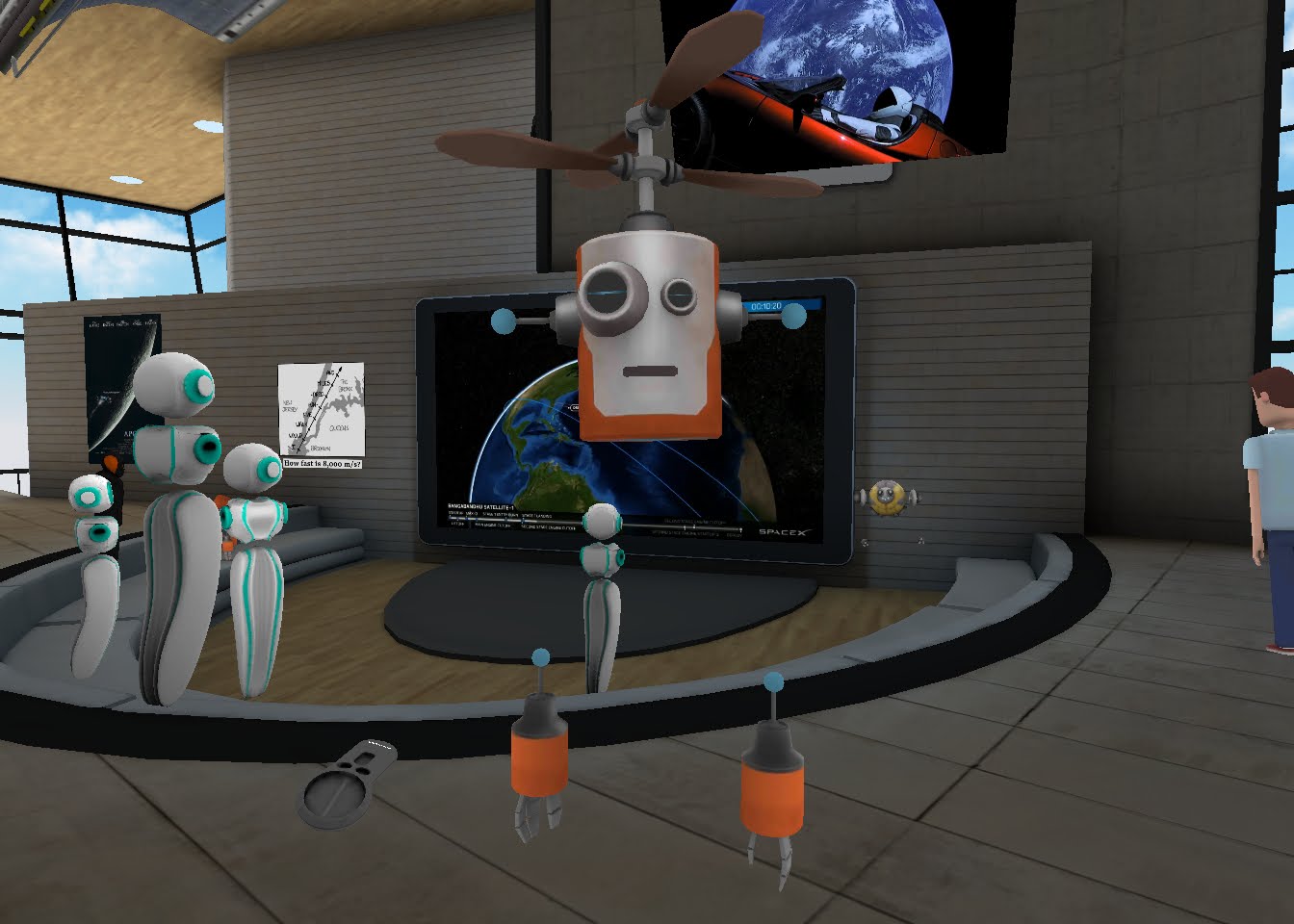Virtual Reality seems to instill an unhealthy fascination on the technology industry: Every few years since the 1970s, a new generation of VR technology comes along. There’s always a lot of hype and excitement, but after a few years the brutal recognition sets in: This thing is not ready yet. A few niche applications typically stick around, but we’re still waiting for the mass market breakthrough of VR.
This time everything seemed to be different: In 2014 Facebook bought early-stage VR developer Oculus for an eye-watering $2B. Around the same time, Samsung started to massively push its phone-based Gear VR system (developed in collaboration with Oculus) and Google seemed to want to roll up the low-end with its cheap Google Cardboard VR viewers. Hundreds of VR startups sprang up, and even serious publishers like National Geographic and the New York Times started developing VR content.
Four years later, things are starting to look decidedly bleak. Yes, there are about 5 million Gear VR units and 3 million Sony Playstation VR headsets in market, plus probably a few hundred thousand higher-end Oculus and HTC Vice systems. Yes, VR is still being demonstrated at countless conferences and events, and big corporations that want to seem innovative love to invest in a VR app or two. Yes, Facebook just cracked an important low-end price point with its $200 Oculus Go headset, theoretically making VR affordable for mainstream consumers. Plus, there’s even more hype about Augmented Reality, which in a way could be a gateway drug to VR.
But it’s hard to ignore a growing feeling that VR is not developing as the industry hoped it would. So is that it again, we’ve seen this movie before, let’s all wrap it up and wait for the next wave of VR to come along about five years from now?
There are a few signs that are really worrying:
1. Nobody is using it
When judging the potential of new technology, I’m always my first test subject. As an early adopter it’s of course tempting to think that consumers will adopt a new technology just because we tech geeks think it’s really cool. That’s typically not the case, or just with a long time delay. I really loved my first Windows tablet back in 2001, but it was a full decade before the iPad and the Surface cracked the market.
The real test goes the other way: If my early-adopter friends and I can’t get sustainably excited about a new technology, there’s nearly zero chance that it will fly in the mainstream. That’s not always true for individual products (Instagram for instance was not a techie fascination but made its way directly to mainstream users), but it seems to hold for more fundamental technology innovation.
I normally like to test the lower-end to mid-range version of new tech. If you want to know what’s going to be available for normal people 10-15 years from now, by all means go high-end. But today’s mid-range is the entry-level consumer product five years from now, and it has to be very compelling to find a market with non-geek consumers. That’s why I own four generations of Samsung’s Gear VR, a Google Daydream and probably a dozen Google Cardboards, all tested over the last few years with different generations of phones. I also have 4 different 360 degree video cameras, tested with different subjects, even my vacation in Cuba.
The result: I’m barely using this stuff. I use some of the headsets maybe once a month to check out what’s new (there typically isn’t much). And 360-degree video is still awkward to film and extremely time-consuming to edit.
It seems like I’m not alone. I hear similar stories from all my friends who own VR equipment. The best public indicator is probably Facebook’s new social VR feature where you can attend events with other people, meet up in virtual chat rooms or play games together. You can see who of your friends uses social VR and is currently online. Out of my 630 Facebook friends, many of which work in the tech industry, a grand total of 18 has an account on the Oculus social VR platform, and I have never seen any of them being online when I was, not even during times of frequent usage.
Even more striking, when you look at participant numbers of public VR events, there are typically just a few dozen to maybe a couple hundred people attending. And that’s on a platform that potentially has 3+ million units out there.
 Not terribly crowded here. The author’s avatar looks a bit sad.
Not terribly crowded here. The author’s avatar looks a bit sad.
For example, I attended a viewing party for SpaceX’s recent Falcon Heavy rocket launch (the one with the roadster). That’s kind of a little geek Woodstock, but nevertheless just about 50 people showed up in VR. Yes, that’s just one data point, but when you log in on the Oculus system, you will see similarly low numbers for almost everything. The top event I was able to find this week had 87 signed up users. Again, that’s out of potentially 3 million or so.
2. VR Content is just not that interesting (yet)
My favorite first app for new users is the Jurassic World demo. A sleeping dinosaur suddenly wakes up, almost hits you with its tail and then takes a closer look at you while grumbling in a dinosaurish way. It’s a very typical example for most VR content these days: Nicely produced, definitely compelling as a demo, but in the end not all that interesting because it relies on cheap thrills instead of an interesting story. Nobody has ever asked to see the demo twice.
A few different categories of VR apps have emerged over the last few years. Out of those, gaming is probably the most advanced and the one with the most potential, both on the high and the low end of the market. Some VR games are a lot of fun, and the full immersion is of course something very special — initially. I have found that the quality of the gameplay in the end is what really matters, and most VR games due to their limited controls and other restrictions are not on the level of the best 2D-Games.
Another VR content category is the “It’s as if you’re there!” video. There are countless clips of all kinds of wonderful places, events, and artistic performances. There’s now even live streaming, which the industry has high hopes for, especially for sports. But when I recently tried out the live stream from the 2018 Soccer World Cup, it was more than disappointing. It was like sitting in the cheap seats, the action was so far away. OK, you were able to switch to a camera behind the goal, but for most of the time, nothing was going on there. All this while wearing an uncomfortable headset – after five minutes it was back to regular TV. And the experience is similar with almost everything in this category. It’s a nice novelty, but not something worth using on a regular basis, at least not at the current state of technology.
Next, there are specialized apps for VR platforms. You can get anything from virtual meditation environments, educational content, or self-help apps (my favorite is the one that is supposed to cure your fear of heights by virtually throwing you up in the air over a deep valley). Again, there’s a lot of potential here, but very little that would stand out as an experience that you possibly couldn’t get almost as nicely in the 2D world, once the novelty wears off.
The final and strangest category are 2D apps that very obviously work much better on other devices but for some reasons are ported to VR. Netflix or Hulu are great examples. There’s probably no less convenient way to watch long-form video than with a heavy VR headset. Why would anybody want to do that?
On the positive side, there is now an ecosystem of developers who have gained experience developing for VR, and there are several hundred titles available. That’s a huge improvement over previous iterations of VR, which typically got stuck at the demo level. But it still doesn’t feel like we’ve seen anything resembling a killer app outside of hardcore gaming.
3. Everybody (except Facebook) seems to be losing interest
When Samsung recently introduced its new flagship Note 9 smartphone, one topic didn’t get mentioned at all: VR. That’s remarkable because Samsung has invested massively into building VR into a differentiator for its phones. Similarly, Google is not talking much about its Daydream VR platform anymore. Nokia and others have left the VR camera business, and a lot of startups are clearly struggling.
On the content side, the daily 360-degree picture has silently disappeared from the New York Time’s app. The Times still makes 360 content, but you have to look hard for it. The same applies to National Geographic, Discovery and other once VR-friendly publishers. There’s a clip here and there, but nothing that makes the front page. You can’t blame the publishers: 360-degree video is hard to produce and still finds a very limited audience. Monetizing it properly is nearly impossible at this point, so of course resources will get redirected. On YouTube, which has invested heavily in VR and 360-degree technology, there are a total of 33 VR/360-degree videos with over 10 million views. Not bad, but nothing that really moves the needle for the huge video platform. By comparison, just the current top song on the charts has more YouTube views than all these videos taken together.
Two of the biggest players in tech have not done anything visible in VR yet: Apple and Amazon – both companies with an outstanding sense of what works for the mainstream consumer. Microsoft has invested heavily into mixed reality, but not pure VR. Rumor has it that Microsoft wanted to launch a VR headset for Xbox but recently killed the project. HTC, one of the pioneers in high-end VR, is not doing well as a company and is considering spinning off its Vive VR division.
Investors are cautious too. For something that is supposed the Next Big Thing, VR/AR doesn’t get a lot of consistent venture capital investment. Much of the activity is concentrated on a few large deals such as the much-hyped Magic Leap, which raised billions before even releasing a product. That is not exactly the structure of a healthy market sector.
About the only major company still happily touting VR is Facebook. Mark Zuckerberg is a master at playing the game of platform dominance, and to some extent his investment into Oculus could be seen as a $2B insurance policy in case VR turns out to be the next big computing platform. What’s a couple billion between friends if it can help secure your future dominance? But if remains to be seen if the sluggish VR market can keep Facebook’s attention and willingness to invest.
Do we just have to wait?
It’s of course unfair to judge the performance of a fundamentally new technology based on relatively short-term results. It’s not even been four years since the first VR solution under $1000 became available (the Samsung Gear VR). But compare this to the launch of the iPhone, arguably the first modern, category-defining smartphone. In the same amount of time (2007-11), about 108M iPhones plus something over 200M Android phones were sold. That’s what a successful category launch looks like. On the other hand, the most optimistic estimates for VR headsets are somewhere in the 20M range (including Cardboard-style ultra-low end viewers).
There’s clearly too much wrong with the state of VR technology as it is. The mainstream market needs something much more polished, and that’s before we even talk about inherent issues such as VR-induced nausea that many people seem to feel.
It can just be hoped that companies such as Facebook and Google continue to invest a bit of their very rich war chests into VR. It would be a shame for this category to die altogether. But one thing is certain: It will be back, sooner or later.


